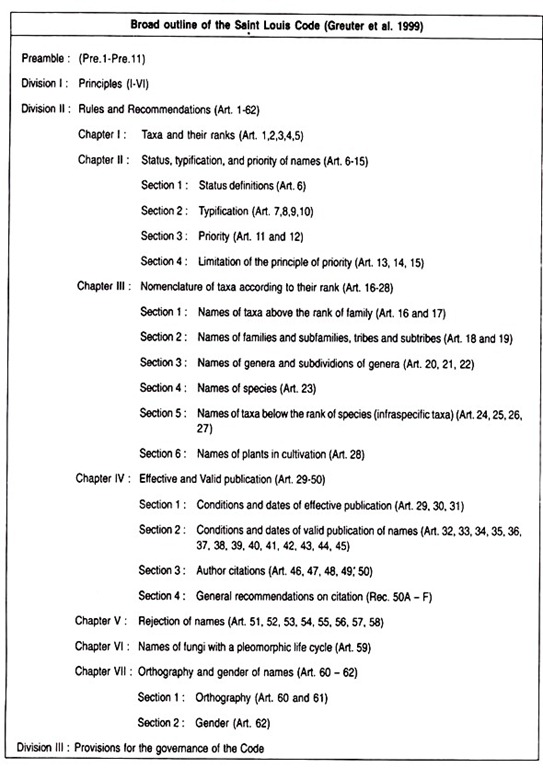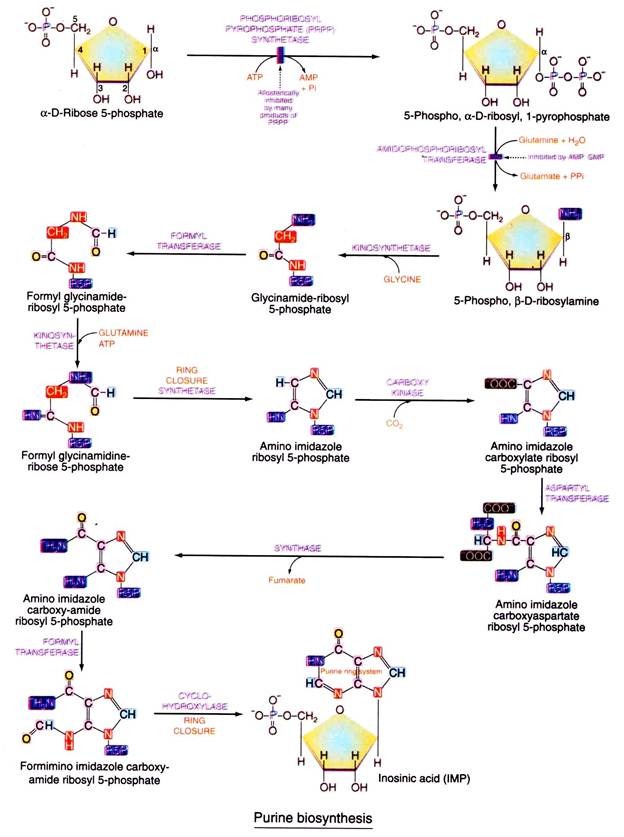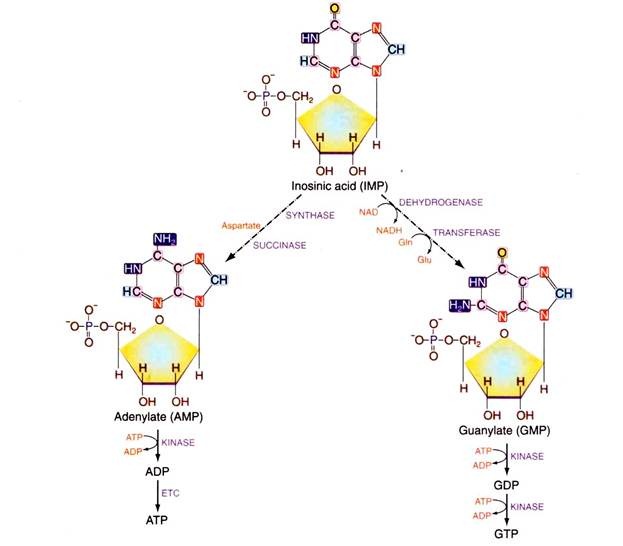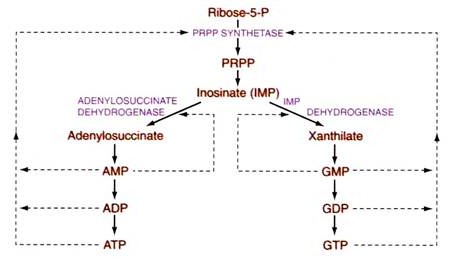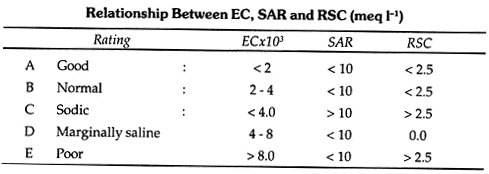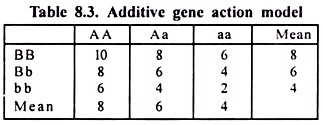Let us make an in-depth study of the biosynthesis of purine nucleotides, pyrimidine nucleotides and deoxyribonucleotides.
Contents
Biosynthesis of Purine Nucleotides:
There are two pathways by which nucleotides are made available for the formation of nucleic acids:
(1) Denovo synthesis i.e. new synthesis and
(2) Salvage process i.e. recycling of the bases.
De Novo Synthesis:
De novo (all over again) synthesis of purine nucleotides is synthesis of purines anew. The purine ring is synthesized along with the nucleotide i.e. attached to the ribose sugar provided from HMP pathway. This pathway supplies ribose sugar for the formation of the nucleotide. Activated form of D-ribose-5-phosphate serves as the starting material on which purine ring is build up step by step.
Precursors of the members of purine ring are:
i. N-1 is contributed by nitrogen of aspartate.
ii. N-3 and N-9 arise from amide nitrogen of glutamine.
iii. C-2 and C-8 originate from the formate.
iv. C-6 is embedded from respiratory carbon dioxide.
v. C-4, C-5 and N-7 are taken up from glycine.
Regulation of purine nucleotide biosynthesis:
Purine biosynthesis is regulated by feedback inhibition. This inhibition is in the 1st step. It is the committed step which is generally irreversible. Once the committed step is passed over, the product has to be formed.
The different mechanisms by which it is regulated are:
Salvage Pathway:
The de-novo synthesis does not occur in all the cells. Brain cells and leukocytes lack this mechanism. In these cells purine synthesis occurs by salvage pathway. Salvage pathway involves synthesis of purine nucleotides from free purine bases, which are salvaged from dietary sources and tissue breakdown. This pathway is promoted by the action of two enzymes which convert free purines into purine nucleotides for reuse.
The enzymes are:
(1) Adenine phosphoribosyl transferase and
(2) Hypoxanthine guanine phosphoribosyl transferase (HGPRT).
Lesch-Nyhan syndrome:
This is a genetic disorder caused due to the deficiency of the enzyme ‘Hypoxanthine Guanine Phospho Ribosyl Transferase (HGPRT)’. When this enzyme is deficient, guanine, xanthine and hypoxanthine are not salvaged and hence degraded to uric acid. This is especially seen in male children. In female children the gene is recessive and is a carrier. It is a male dominant gene. Such males show (1) mental retardation and (2) tendency for self-destruction.
Biosynthesis of Pyrimidine Nucleotides:
Pyrimidine nucleotide biosynthesis takes place in a different manner from that of purine nucleotides. The six membered pyrimidine ring is made first and then attached to ribose phosphate. The synthesis begins with carbon dioxide and ammonia combining to form carbamoyl phosphate catalysed by the cytosolic enzyme carbamoyl phosphate synthetase-II.
Carbamoyl phosphate combines with aspartate to form carbamoyl aspartate aided by the enzyme aspartate transcarbamoylase. Dihydroorotate is formed from carbamoyl aspartate by removal of water and closure of the ring under the influence of the enzyme dihydroorotase.
Dihydroorotase is oxidized to orotic acid by dehydrogenase which uses NAD+ as the electron acceptor. Orotic acid is attached to ribose to yield orotidylic acid. Orotidylate is then decaroxylated to form uridylate. Uridylate is then converted to all the other pyrimidine nucleotides viz., CMP, UMP & TMP. The reaction steps involved in the biosynthesis of pyrimidine nucleotides are given under.
Regulation of Pyrimidine Biosynthesis:
Regulation of pyrimidine biosynthesis is by feed back inhibition at the committed step i.e. the reaction catalysed by the enzyme aspartate transcarbamoylase. This is negatively inhibited by the end product i.e. CTP. The second site is at carbamoyl phosphate synthase- II which is feedback inhibited by UMP.
Orotic Aciduria:
It is a metabolic disorder of pyrimidine biosynthesis characterized by accumulation of orotic acid in blood and its increased excretion in urine. It is caused due to the deficiency of enzyme orotidylic acid phosphorylase and orotidylic acid decarboxylase or orotic phosphoribosyl transferase. This leads to non-conversion of orotic acid to UMP. This may even affect the synthesis of other nucleotides. It is generally found in children who show retarded mental development and growth as there is no proper synthesis of DNA. They show megaloblastic anemia. This can be overcome by injection of CTP and UTP.
Biosynthesis of Deoxyribonucleotides:
Deoxyribonucleotides are obtained from ribonucleotides. Thioredoxin is a protein which takes part in the conversion of ribonucleotides to deoxyribonucleotides.
